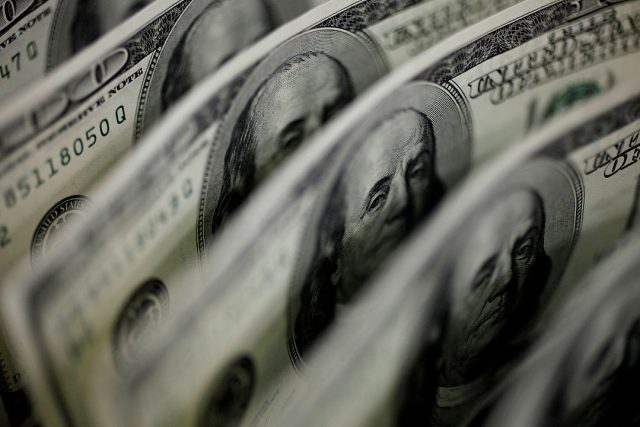
GROSS INTERNATIONAL reserves (GIR) — which shield the country from liquidity shocks — dipped as of end-September as the government paid its foreign debt obligations and lower valuation of the central bank’s gold reserves.
Data released by the Bangko Sentral ng Pilipinas (BSP) on Wednesday showed the GIR stood at $107.156 billion as of end-September, slipping by 0.74% from its $107.964-billion level as of end-August.
The end-September level, however, was up by 6.68% from the $100.443 billion logged a year earlier.
“The month-on-month decrease in the GIR level was attributed mainly to the debt service payment of the National Government’s foreign currency debt obligations and downward adjustment in the value of the BSP’s gold holdings due to the decrease in the price of gold in the international market,” the BSP said in a statement.
At its end-September level, the GIR could cover 10.8 months’ worth of imports of goods and payments of services and primary income. It is also enough to service about 7.6 times the country’s short-term external debt based on original maturity and 5.2 times based on residual maturity.
An ample level of foreign exchange buffers safeguards an economy from market volatility and is an assurance of the country’s capability to pay debts in the event of an economic downturn.
Broken down, buffers in the form of foreign investments slipped by 0.3% to $90.242 billion last month from $90.549 billion in August, although it increased by 7% from the $84.298 billion a year earlier.
Foreign currency deposits also dropped by 5.3% to $3.271 billion from $3.454 billion a month earlier and by 26% from the $2.597 billion in September 2020.
The BSP’s gold holdings were valued at $8.848 billion as of end-September, down by 3.35% from the $9.155 billion in the previous month and by 23% from the $11.594 billion a year earlier.
The country’s reserve position in the International Monetary Fund (IMF) likewise declined by 1.37% to $786.3 million from $797.2 million in the previous month. However, it was up by 5% from the $747.7 million in September last year.
Meanwhile, the country’s reserves in the form of special drawing rights (SDRs) — or the amount the country can tap from the IMF — stood at $4.008 billion for the second straight month. It increased more than three times from the $1.204 billion a year ago.
In August, the Philippines gained SDRs equivalent to $2.777 billion, as part of the IMF’s distribution of around $650 billion in SDRs to its members as part of its efforts to help countries recover from the coronavirus pandemic.
Rizal Commercial Banking Corp. Chief Economist Michael L. Ricafort said the lower GIR was seen amid the decline in foreign investments due to cautious sentiment arising from the Evergrande Group’s debt crisis and the US Federal Reserve’s hawkish tone.
In a Viber message, Mr. Ricafort said the seasonal increase in cash remittances could be key to lifting the GIR in the last months of 2021.
The GIR reached a record level of $110.117 billion as of end-December 2020.
Last month, the central bank trimmed its GIR projection by end-2021 to $114 billion from $115 billion previously. — Luz Wendy T. Noble
GIR falls as of end-Sept. on gov’t debt payments
Source: Bantay Radio
0 Comments